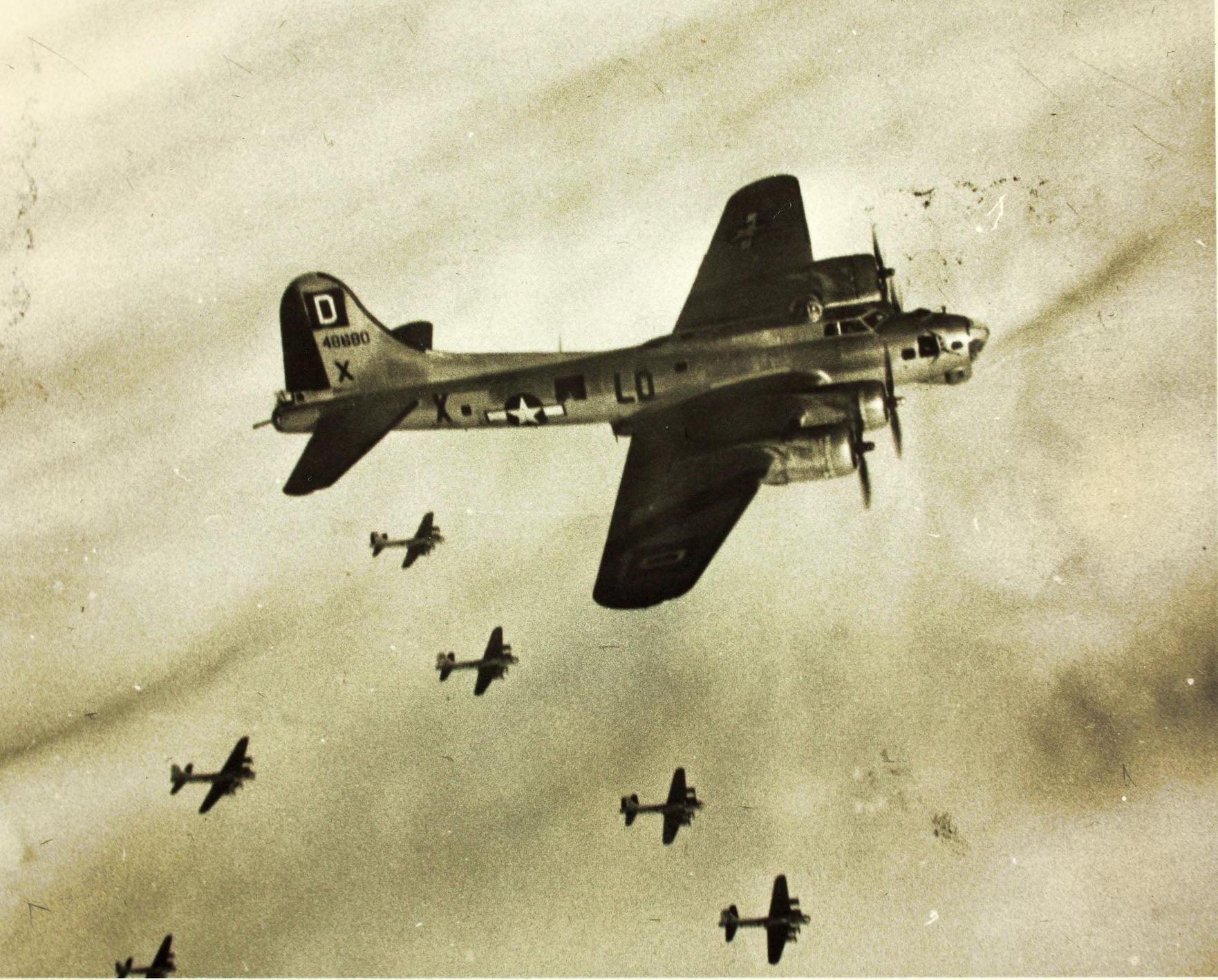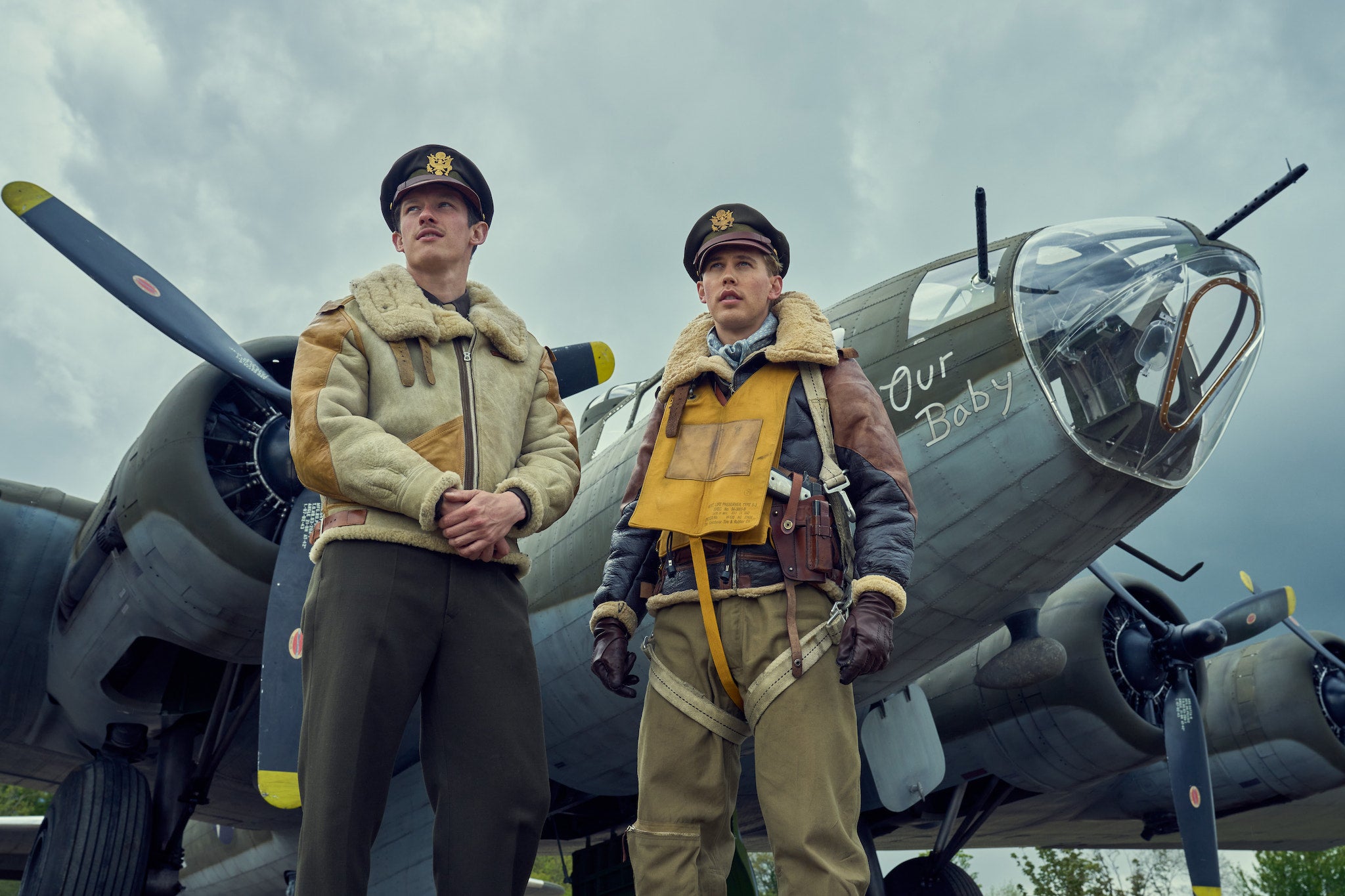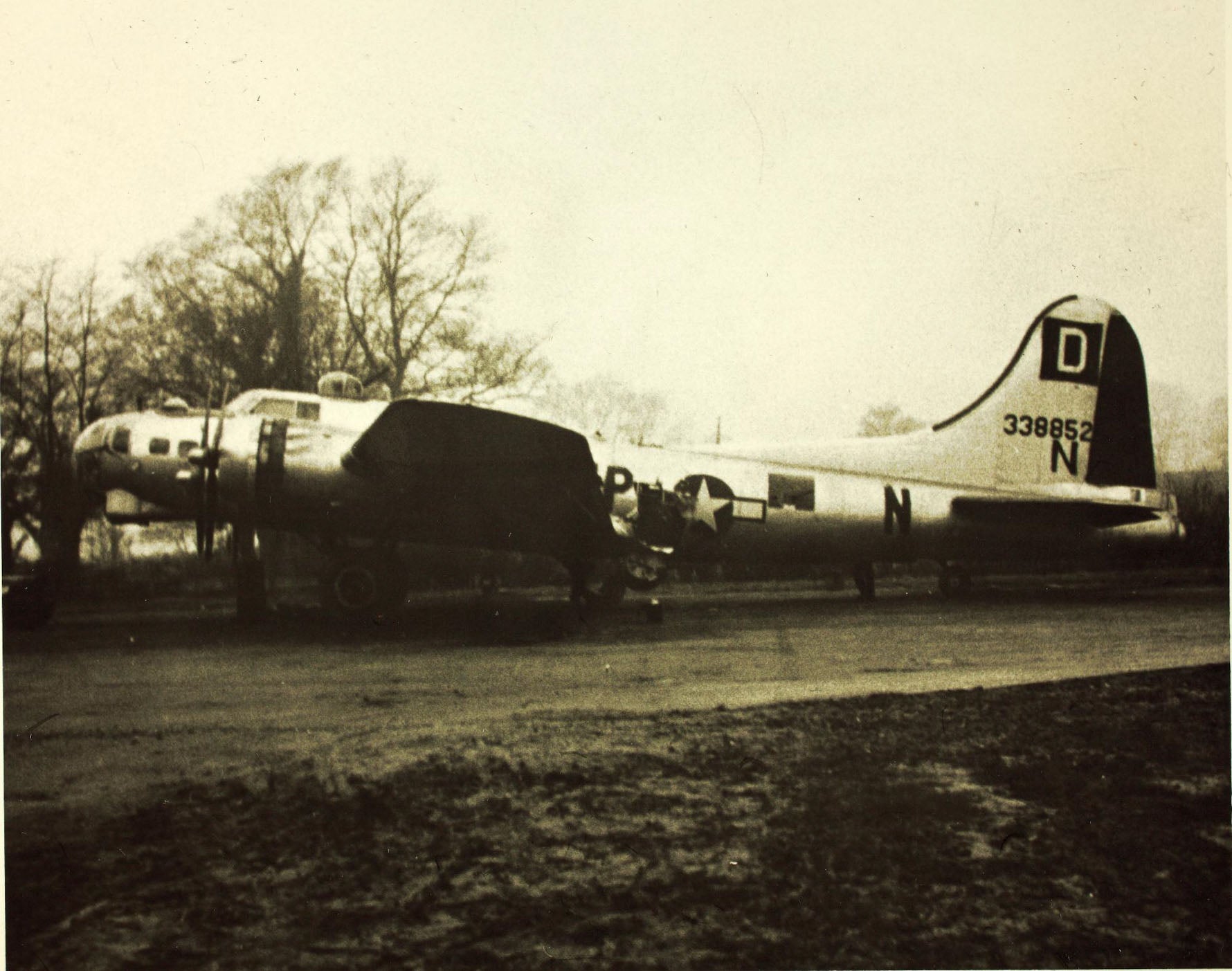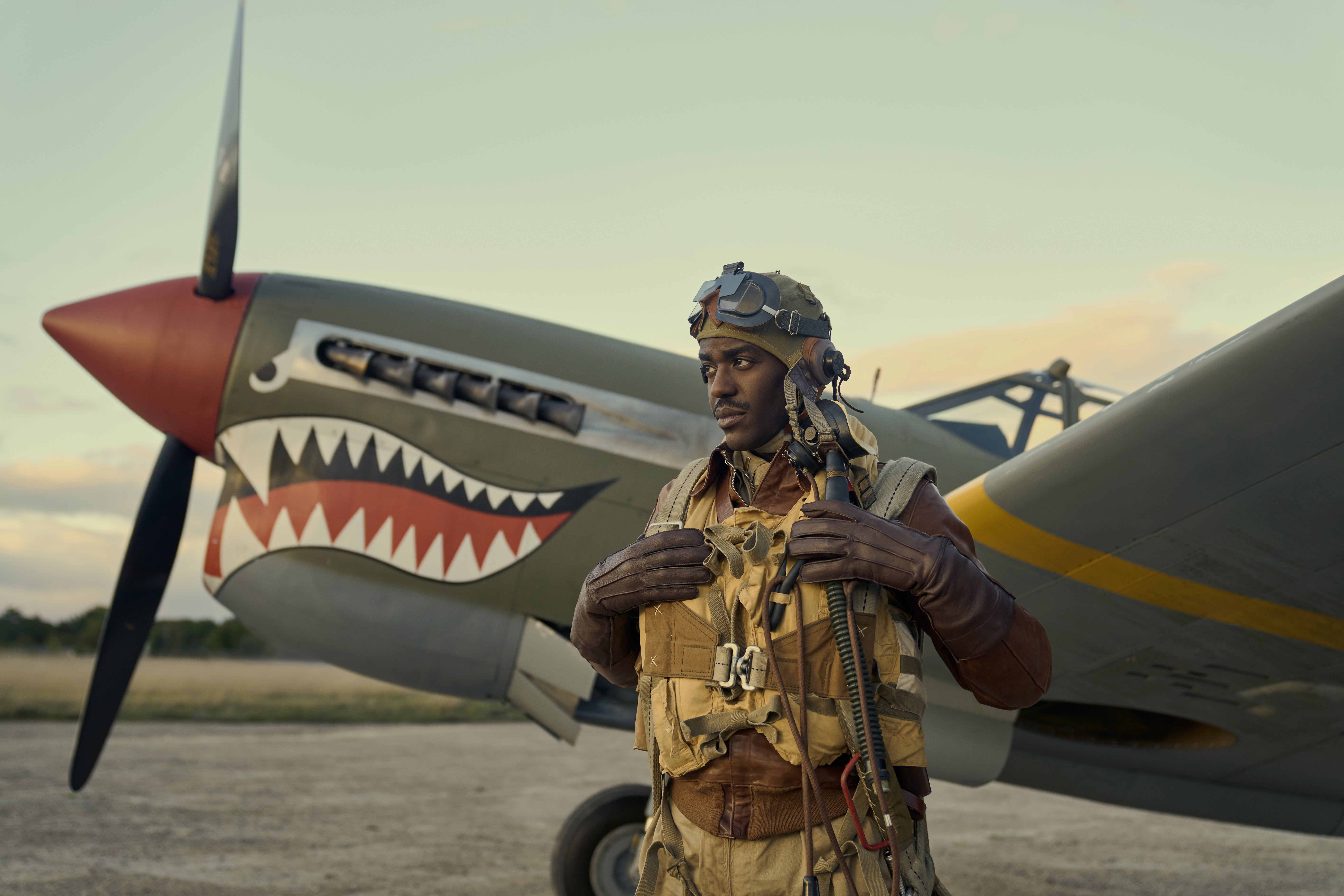The Independent's journalism is supported by our readers. When you purchase through links on our site, we may earn commission.
Masters of the Air: the catastrophic true story of the Bloody Hundredth bomb group in the Second World War
On their first mission alone, they lost three planes and 30 men. Sky-high casualties earned them their grim nickname early on, and now their incredible story is being put on screen in an epic war drama on Apple TV+. Annabel Nugent reads up on the young men in the cockpit


An old review of the 2001 TV war drama Band of Brothers begins with a quote from Dr Samuel Johnson. “Every man thinks meanly of himself for not having been a soldier, or not having been at sea. The profession of soldiers and sailors has the dignity of danger,” Johnson wrote in 1778. “Mankind reverence those who have got over fear, which is so general a weakness.” Centuries later, his words ring old-fashioned, and largely untrue, but once again they spring to mind when watching Apple TV+’s new miniseries Masters of the Air.
Band of Brothers and its spiritual successor The Pacific (2010) brilliantly conjured that “dignity of danger” with their respective pulse-quickening dramatisations of the Second World War. Now, producers Steven Spielberg and Tom Hanks are back with their eagerly awaited third instalment of blood and glory – this time set against the backdrop of Germany’s fire-filled skies. Masters of the Air is special effects galore, putting to good use its rumoured budget of $250m (£196m) – some of which has undoubtedly gone into enlisting every hot new name in Hollywood: Austin Butler (fresh out of Graceland after starring in Elvis), Saltburn’s Barry Keoghan, The Capture’s Callum Turner, and Doctor Who himself, Ncuti Gatwa.
Based on Donald L Miller’s 2006 book Masters of the Air: America’s Bomber Boys Who Fought the Air War Against Nazi Germany, the nine-episode miniseries follows the men of the 100th Bomb Group, who were part of the US air force unit brought in to bolster the flagging formations of America’s Eighth Air Force in 1943.
New subscribers only. £8.99/mo. after free trial. Plan auto-renews until cancelled.
The crew flew B-17s out from Thorpe Abbots, near Diss in Norfolk, between 1943 and 1945. During that time, their job was to strike deep into German land – or as the show’s trailer ominously declares “straight into Hitler territory”. As noted by journalist and military historian Max Hastings in The Times, who receives his own cameo in the series, the Americans took a different tack to the British RAF Bomber Command. More heavily gunned and armoured than British planes, the US aircraft attacked in broad daylight (as opposed to under night cover), flying in tight formations they believed to be sufficient defence against fighter attacks. “I want formations so damn tight you wouldn’t be able to slip a dime through our wingtips,” the 100th’s commanding officer tells the boys in the series. Their theory, however, turned out to be fatally false.
Gloomy European weather also posed an insurmountable challenge. The pilots, used to the clear skies of California and Colorado, found themselves up against grey clouds and poor visibility, essentially having to bomb blindly from 25,000ft in the air. Needless to say, the efficacy of their attacks was severely impeded.
Throughout 1943 and 1944, these bombers – who worked alongside several British and American support units – flew over Germany with minimal success and maximum casualties on their part. Often flying lower to the ground than other planes, the aircraft were easy targets for enemy fighters and ground guns. Their targets included transport links, communications lines, oil storage facilities, power plants, industrial cities, missile sites, arms factories, and military facilities across Europe. The Imperial War Museum website writes that while the 100th is not “statistically noteworthy” (other groups won more battles and lost more men, for example), the unit became renowned for its tragically steep death rate in raids that were very often fatal. Questioning whether the group deserved their grim moniker, the 100th’s lead navigator, Harry Crosby once said: “Other outfits lost more planes and crews than we did. What marked us was that when we lost, we lost big.”
Between 25 June 1943 and 20 April 1945, the 100th Bomb Group took part in just over 300 missions, and it is eight of those that accounted for nearly half of their losses. On average, a crew completed only 11 missions of the 25 they were required to complete before they were allowed to go home.
Masters of the Air captures that intensity in high definition, tracking the pilots in the cockpit as they dodge flak, frostbite, and notably the grim reaper – whose scythe is never far out of shot. It’s irresistible cinema: epic in a way rarely seen on the small screen. Planes soar; they crash, burn; they plummet and pull up – all the while the young men inside brace for the worst and pray for the best, not only for themselves but also for their comrades in the sky. Johnson’s quote about the “dignity of danger” rings deafeningly loud in scenes like these.

On 17 August 1943, over the southeastern German city of Regensburg, the 100th lost nine out of the 22 Fortresses dispatched, equating to 90 men dead (10 per crew). The group received its first Distinguished Unit Citation for the attack, which sought to severely damage German aircraft production. In October that year, 18 aircraft of the 100th Bomb Group were sent to strike targets in the German city of Münster. Owing to depleted forces, only 13 planes were dispatched, far fewer than the complete group of 19 or 21. Of those 13, 12 were shot down. The skies were filled with flak and flames; only one plane commanded by 26-year-old Robert Rosenthal, made it back to England, albeit with two engines out, a gaping hole in one wing, and three injured gunners.

Watch Apple TV+ free for 7 day
New subscribers only. £9.99/mo. after free trial. Plan auto-renews until cancelled.
ADVERTISEMENT. If you sign up to this service we will earn commission. This revenue helps to fund journalism across The Independent.

Watch Apple TV+ free for 7 day
New subscribers only. £9.99/mo. after free trial. Plan auto-renews until cancelled.
ADVERTISEMENT. If you sign up to this service we will earn commission. This revenue helps to fund journalism across The Independent.
That October, the 100th lost approximately 100 men in just three missions. Those who returned home found comfort in the UK’s pastoral landscapes, only to once again be jettisoned back into the violent skies shortly thereafter. While their success varied, the men of the 100th were celebrated for their courage in forging on despite the odds. The loss of their comrades, though, took a huge mental toll on these young men. In his article for The Times, Hastings recalls how his mother, who had been the woman’s editor of the magazine Picture Post, was asked to take a team of female colleagues and models to a Christmas party for some of the American bomber men to help lift their spirits. Hastings writes that what began as a frivolous occasion of festive fun, however, soon devolved into tears and anguish as many of the pilots broke down emotionally.
Other outfits lost more planes and crews than we did. What marked us was that when we lost, we lost big.
Those pilots who survived being shot out of the sky almost always landed in enemy territory, where they were scooped up and taken to prisoner-of-war camps to live out the rest of the war. This was true for Major Gale “Buck” Cleven and Major John “Bucky” Egan, the real-life cadets who lead Masters of the Air, played by Butler and Turner. The best friends, who both signed up in Texas in 1940, were shot down two days apart in 1943 – only to bump into one another at Stalag Luft III, a German PoW camp, where Egan was taken following the fated Münster raid in October. “What the hell took you so long?” is how Cleven apparently greeted his pal upon seeing him. It’s within the walls of these PoW camps where the final episodes of Masters of Air take place. As the allies and the Soviet Union advanced, Egan and Cleven were among the 10,000 or so prisoners marched towards the eastern city of Spremberg. The march was long and brutal; hundreds died from the cold or disease, or both. The two pals, though, survived.

As described by Crosby in his book A Wing and a Prayer: The Bloody 100th Bomb Group of the US Eighth Air Force in Action Over Europe in World War II, Egan and Cleven were “Air Corps raunch, their hats cocked on the back of their heads… both wearing white scarves, the souls of romanticism”. They also notably “hated discipline”.
Other real-life pilots feature in the series, too, including Captain Frank Murphy (played by Jonas Moore), whose book Luck of the Draw: My Story of the Air War in Europe chronicles his time with the 100th, including the time he parachuted out of his burning plane into Holshausen, a farming community northeast of Munich. One episode of Masters of the Air focuses on the Tuskegee Airmen, the first all-Black flying unit in American military history, of which Gatwa’s character, the real-life Second Lieutenant Robert Daniels, is a storied part.
Fans of Band of Brothers and The Pacific will find much to enjoy about Masters of the Air, which has been described (favourably) as “Band of Brothers but in the sky”. The aerial battles are dizzyingly shot, pulsing with an incredible intensity one hopes does at least some justice to the real thing.

Above all, though, the series imparts a sense of brotherhood. Before his capture in October 1943, Egan had been present on the ill-fated Regensburg raid months before, when nine of their 12 aircraft went down. His was one of three to survive, touching down as planned in North Africa. As quoted by the American Air Museum website, upon seeing his comrades, Egan said: “I never saw such a feeling of fraternity as when we landed. Everyone shook hands and slapped each other on the back, then stamped on the good solid earth.” Even amid its tragedies, Masters of the Air soars.
‘Masters of the Air’ is available to watch on Apple TV+ now.
Join our commenting forum
Join thought-provoking conversations, follow other Independent readers and see their replies
Comments